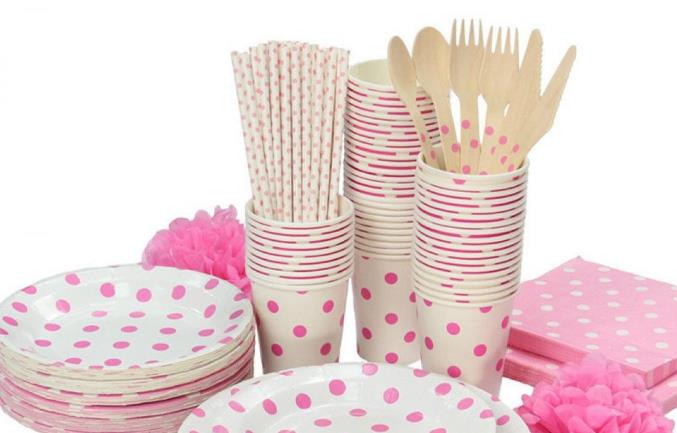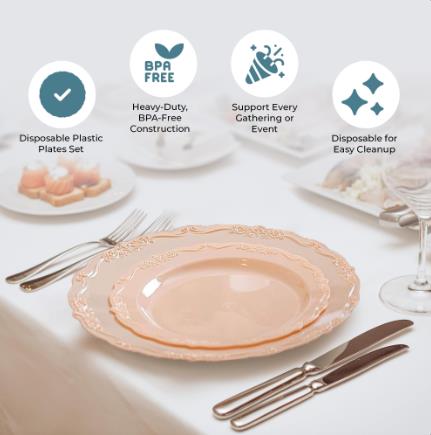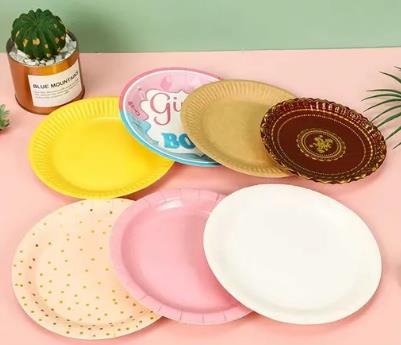
Content Menu
● Introduction
● The Raw Materials
>> For Disposable Glasses:
>> For Disposable Plates:
● The Manufacturing Process
>> Making Disposable Glasses
>> Making Disposable Plates
● DIY Disposable Plates
● Environmental Considerations
>> Eco-Friendly Alternatives
● The Business of Disposable Plates and Glasses
● Conclusion
● FAQ
>> 1. Are disposable plates and glasses recyclable?
>> 2. How long do biodegradable disposable plates take to decompose?
>> 3. Can I make my own disposable plates at home?
>> 4. What are the most eco-friendly materials for disposable plates and glasses?
>> 5. How much does it cost to start a disposable plate and glass manufacturing business?
● Citations:
Introduction
In today's fast-paced world, disposable glasses and plates have become an essential part of our daily lives. From parties and picnics to office lunches and takeout meals, these convenient items offer a quick and easy solution for serving food and beverages. But have you ever wondered how these disposable items are made? In this comprehensive guide, we'll explore the fascinating process of creating disposable glasses and plates, from the raw materials used to the manufacturing techniques employed.

The Raw Materials
Before we delve into the manufacturing process, let's take a look at the primary materials used in making disposable glasses and plates:
For Disposable Glasses:
1. Paper: The main component of disposable cups is paperboard, a thick paper made from wood pulp fibers[7].
2. Polyethylene (PE) coating: This thin plastic layer provides water resistance and prevents leakage[7].
3. Adhesives: Used to seal the cup and hold its shape[7].
4. Inks: For printing designs and logos on the cups[7].
For Disposable Plates:
1. Paper or paperboard: Similar to cups, plates are primarily made from thick paper[3].
2. Biodegradable materials: Some eco-friendly plates are made from materials like sugar cane, potato starch, or corn[3].
3. Laminated paper: For added strength and water resistance[2].
The Manufacturing Process
Now that we understand the materials involved, let's explore the step-by-step process of making disposable glasses and plates.
Making Disposable Glasses
1. Preparing the paperboard:
The process begins with large rolls of paperboard. These rolls are fed into machines that cut and shape the paper into the desired cup size.
2. Applying the PE coating:
A thin layer of polyethylene is applied to one side of the paperboard. This coating provides water resistance and helps prevent leakage.
3. Cutting and shaping:
The coated paperboard is cut into specific shapes that will form the body of the cup.
4. Forming the cup:
The cut paperboard is then wrapped around a mandrel (a cylindrical shaping tool) to create the cup's shape. The edges are sealed using heat and pressure.
5. Adding the bottom:
A separate circular piece of coated paperboard is attached to the bottom of the cup using heat sealing.
6. Rim formation:
The top edge of the cup is rolled outward to create a smooth rim, which also adds strength to the cup's structure.
7. Printing and finishing:
If desired, designs or logos are printed onto the cup's exterior. The cups are then stacked and packaged for distribution.

Making Disposable Plates
1. Preparing the raw material:
For paper-based plates, large rolls of paperboard or laminated paper are used. For eco-friendly options, materials like sugar cane or corn starch are prepared.
2. Cutting the material:
The raw material is cut into circular shapes of the desired plate size[1].
3. Molding the plate:
The cut circles are placed into a heated mold that shapes them into plates. This process often involves two parts:
- A top die that presses down
- A bottom die that forms the plate's shape
4. Applying heat and pressure:
The mold applies heat and pressure to the material, forming it into the final plate shape. For paper-based plates, this process also activates any lamination or coating[2].
5. Cooling and setting:
The plates are allowed to cool, which sets their shape.
6. Trimming and finishing:
Any excess material around the edges is trimmed off, and the plates are given a final inspection.
7. Packaging:
The finished plates are stacked and packaged for distribution.
DIY Disposable Plates
While industrial production is the most common method for creating disposable plates, it's possible to make your own custom disposable plates at home for special occasions. Here's a simple method using glass plates as a base:
1. Gather materials:
- Clear glass plates
- Decorative paper or fabric
- Decoupage medium
- Scissors
- Foam brush
2. Prepare the design:
- Measure the well of the plate on the back side.
- Find or create a design that fits the size of the plate's well.
- Print and cut out the design[8].
3. Apply the design:
- Clean the glass plate thoroughly.
- Apply decoupage medium to the back of the plate's well.
- Place the cut-out design face-down on the decoupage medium.
- Apply another layer of decoupage medium over the back of the paper[8].
4. Let it dry:
- Allow the plate to dry completely before use.
This DIY method allows for creative customization for special events or holidays. However, keep in mind that these plates are intended for single use, as washing will remove the design[8].
Environmental Considerations
As convenient as disposable plates and glasses are, their environmental impact is a growing concern. Many disposable items end up in landfills or as litter, contributing to pollution. To address this issue, manufacturers are increasingly turning to eco-friendly materials and production methods.
Eco-Friendly Alternatives
1. Biodegradable materials: Some disposable plates are now made from materials like sugar cane, potato starch, or corn, which can decompose naturally[3].
2. Recyclable options: Many paper-based cups and plates can be recycled if properly disposed of.
3. Compostable products: Some disposable items are designed to break down in composting facilities, reducing landfill waste.
The Business of Disposable Plates and Glasses
For entrepreneurs interested in entering the disposable tableware market, starting a production plant can be a viable business opportunity. Here are some key considerations:
1. Equipment: Invest in automated machinery for efficient production[9].
2. Licensing and paperwork: Ensure all necessary permits and licenses are obtained[9].
3. Utilities: Secure reliable water and electricity supply[9].
4. Labor: Hire and train skilled workers[9].
5. Financing: Explore small business lending programs or government schemes for initial funding[9].
Conclusion
The production of disposable glasses and plates is a complex process that combines material science, engineering, and manufacturing techniques. From the selection of raw materials to the final packaging, each step is carefully designed to create products that are convenient, cost-effective, and increasingly environmentally friendly.
As consumers become more aware of the environmental impact of disposable items, the industry continues to evolve, developing new materials and production methods to address these concerns. Whether you're using store-bought disposables or creating your own DIY versions for special occasions, understanding the process behind these everyday items can give you a greater appreciation for the science and creativity involved in their production.

FAQ
1. Are disposable plates and glasses recyclable?
Many paper-based disposable plates and glasses are recyclable, but it depends on the specific materials used and local recycling facilities. Always check the packaging for recycling information and follow your local recycling guidelines.
2. How long do biodegradable disposable plates take to decompose?
The decomposition time for biodegradable plates varies depending on the material and environmental conditions. In ideal composting conditions, some biodegradable plates can break down in as little as 30-90 days, while others may take several months to a year.
3. Can I make my own disposable plates at home?
While it's not practical to make truly disposable plates at home, you can create custom, single-use plates using glass plates as a base and decorating them with paper or fabric using decoupage techniques. These are suitable for special occasions but are not intended for repeated use.
4. What are the most eco-friendly materials for disposable plates and glasses?
Some of the most eco-friendly materials for disposable tableware include:
- Bagasse (sugarcane fiber)
- Bamboo
- Palm leaf
- Wheat straw
- Corn starch
These materials are renewable, biodegradable, and often compostable.
5. How much does it cost to start a disposable plate and glass manufacturing business?
The cost of starting a disposable plate and glass manufacturing business can vary widely depending on factors such as location, scale of production, and type of equipment. Initial investments can range from $50,000 to several hundred thousand dollars. It's essential to create a detailed business plan and explore financing options before starting.
Citations:
[1] https://www.youtube.com/watch?v=wk5qvLpvXRE
[2] https://www.youtube.com/watch?v=K3CnsUcb0Ew
[3] https://www.linkedin.com/pulse/start-business-production-disposable-
[4] https://www.alamy.com/stock-photo/paper-plate-craft.html?sortBy=relevant
[5] https://stock.adobe.com/search?k=disposable+plates
[6] https://www.youtube.com/watch?v=gNN92_JJs_Q
[7] https://www.paperjoypaper.com/news/what-raw-materials-are-needed-for-making-paper-cups/
[8] https://masterpiecesofmylife.com/diy-glass-plates-for-a-custom-look/
[9] https://www.niir.org/blog/how-can-i-start-disposable-plate-and-glass-processing-plant/

















